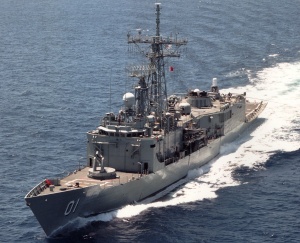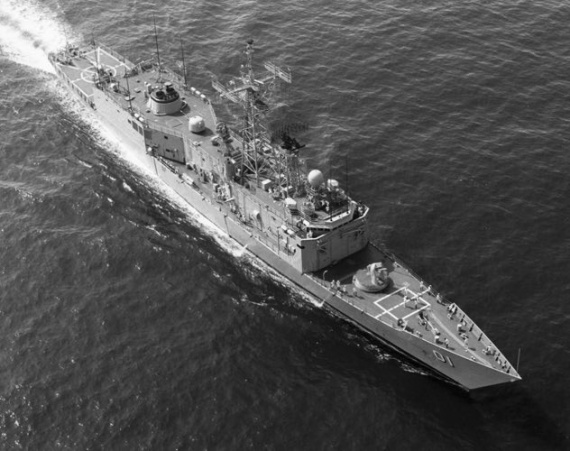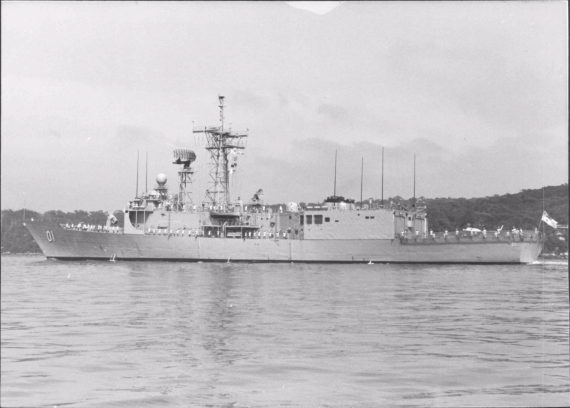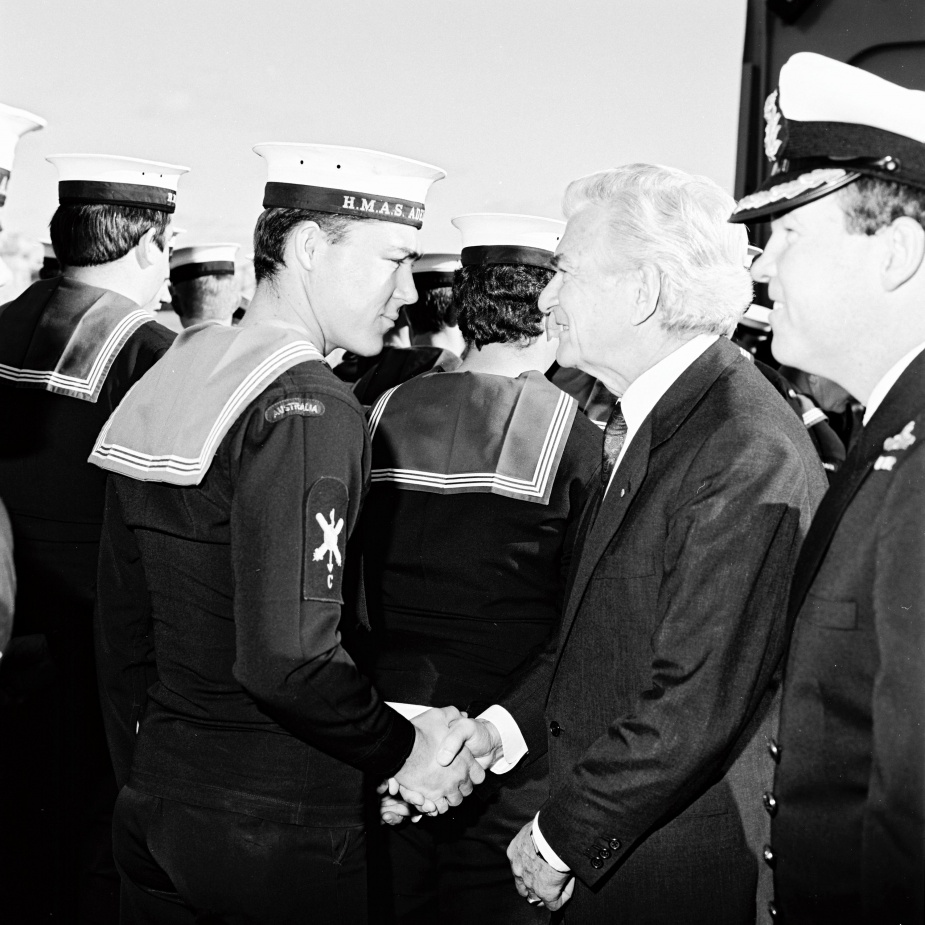HMAS Adelaide (II)
| Class |
Adelaide Class |
|---|---|
| Type |
Surface Combatant |
| Pennant |
FFG 01 |
| Motto |
United For The Common Good |
| Builder |
Todd Pacific Shipyards, Seattle, Washington |
| Laid Down |
29 July 1977 |
| Launched |
21 June 1980 |
| Commissioned |
15 November 1980 |
| Decommissioned |
19 January 2008 |
| Fate |
Scuttled on 13 April 2011 as a dive wreck off Avoca, New South Wales |
| Dimensions & Displacement | |
| Displacement | 4200 tonnes |
| Length | 138.10 metres |
| Beam | 14.30 metres |
| Draught | 7.50 metres |
| Performance | |
| Speed | 30 knots |
| Complement | |
| Crew | 221 |
| Propulsion | |
| Machinery | Two General Electric LM2500 gas turbines driving a single controllable pitch propeller each providing 20,500 hp |
| Armament | |
| Missiles |
|
| Guns | 1 × 76mm OTO Melara gun |
| Torpedoes | 2 x triple 324mm Mk 32 torpedo tubes |
| Electronic Countermeasures | Nulka |
| Radars |
|
| Sonars | AN/SQS-56 |
| Electronic Warfare | AN/SLQ-32 |
| Awards | |
| Inherited Battle Honours | |
| Battle Honours | |

HMAS Adelaide (II) (FFG-01) was a long-range escort frigate with roles including area air defence, anti-submarine warfare, surveillance, reconnaissance, and interdiction. The ship could simultaneously counter threats from the air, surface and sub-surface.
Built in the United States, Adelaide (II) was commissioned on 15 November 1980 and was the first of six Adelaide Class guided missile frigates to be delivered to the Royal Australian Navy. Adelaide (II) was the second ship in the RAN to carry this name. The first was a light cruiser that served from 1922 to 1945.
Along with her five sister ships, Canberra (II), Sydney, Darwin, Melbourne and Newcastle, Adelaide (II) was powered by gas turbines for its main propulsion. Guided missile frigates could be underway from a cold start in less than 30 minutes. In addition, two forward mounted auxiliary propulsion units provided a secondary means of propulsion and excellent manoeuvrability in confined waters.
Adelaide (II) was equipped with a number of sensors that included long range radars for air and surface surveillance, electronic warfare and optical surveillance systems, a medium range sonar and a command and control system, that incorporated target data received by data link from other ships and aircraft.
The principal weapons installed in Adelaide (II) were the Standard medium range anti-aircraft missile and the Harpoon anti-shipping missile. Both missiles were launched from the Mk 13 launcher on the forecastle. A 76mm gun to counter both air and surface threats was fitted forward of the funnel. A 20mm Phalanx close-in-weapons-system, Nulka decoy and chaff systems were fitted for anti-missile defence. Adelaide (II) had a capacity for two S-70B-2 Seahawk helicopters and was fitted with two sets of Mk 32 triple torpedo tubes to provide a counter to submarines.
Adelaide (II) was the first guided-missile frigate to be home ported in Western Australia. The ship participated in the 1990/91 Gulf War, peacekeeping operations in East Timor in 1999 and was deployed to the Arabian Gulf as part of the International Coalition against Terrorism in 2001 and 2004.







